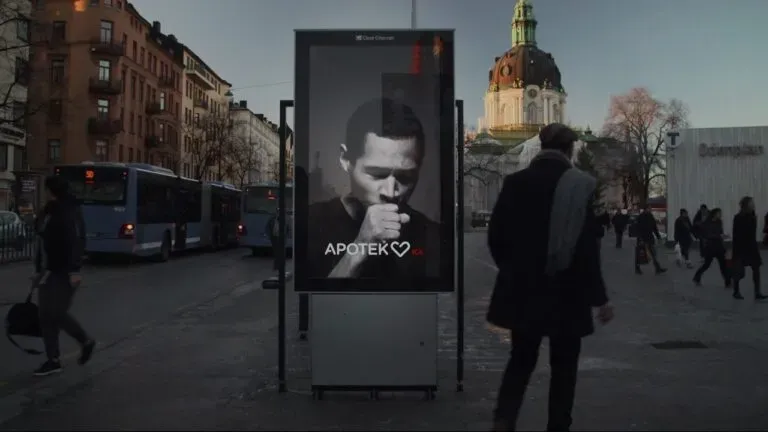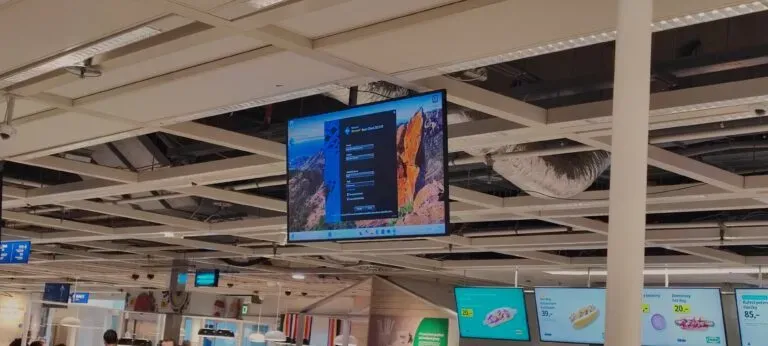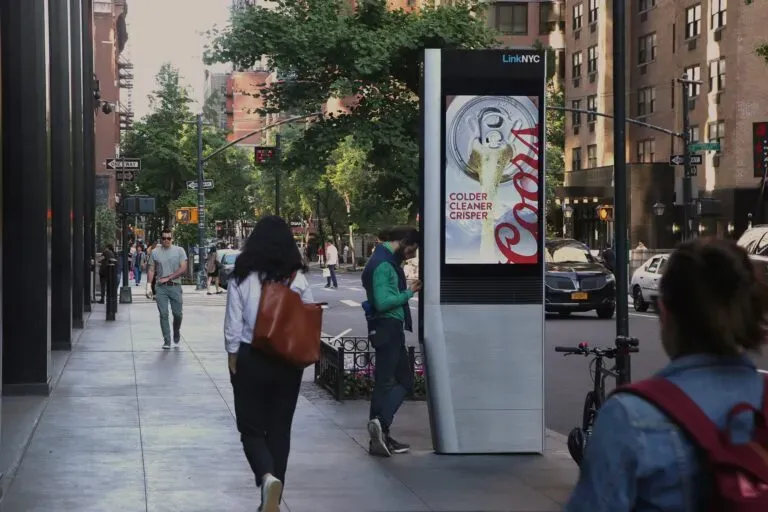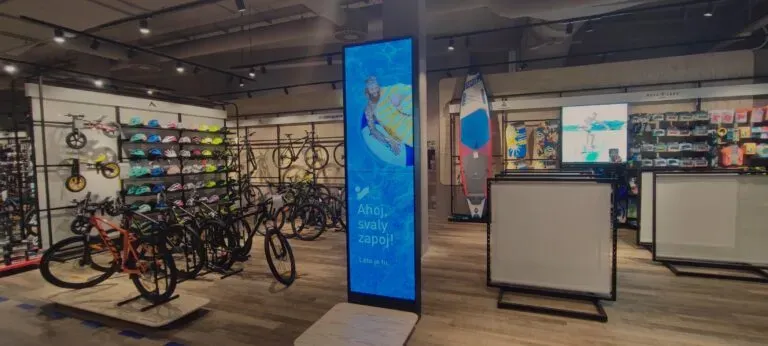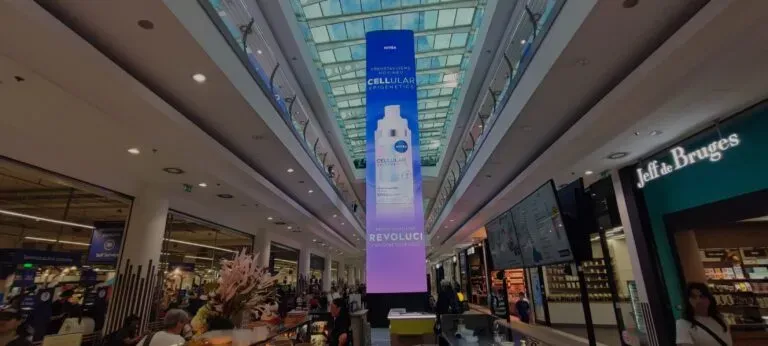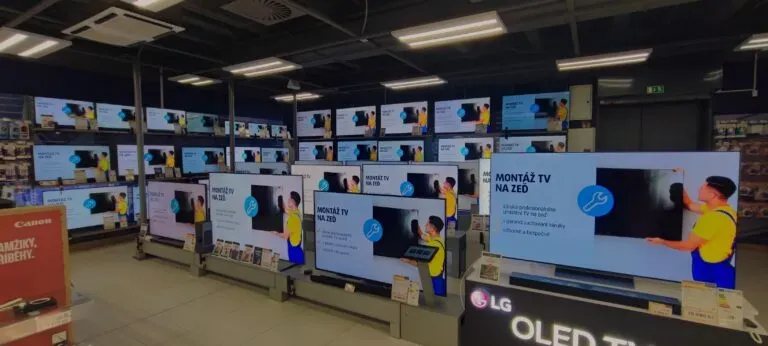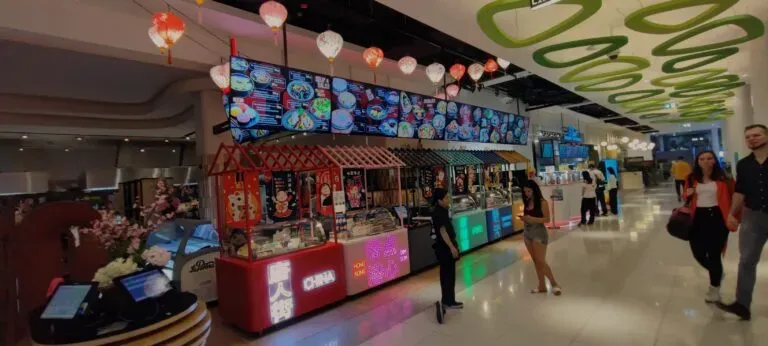CRM systems with digital screens: 4 advantages of integrating online analytics
CRM systems with digital screens: Digital advertising plays a decisive role in building effective communication between companies and consumers, ensuring a fast and dynamic exchange of information.
The Digital Signage system is not just a visual solution for displaying information, but a powerful interaction channel that allows creating a personalized experience for each client. Today, companies are actively integrating digital signage software with CRM platforms and online analytics to make full use of data potential and turn content into an effective sales tool.
Why should online analytics and CRM be combined with Digital Signage?
Integration of data from Digital Signage solutions into CRM systems allows companies to obtain a complete picture of consumer behavior. For example, the system can record how often clients interact with the screen, which products cause the greatest interest, and at what time of day audience activity is highest. This data automatically enters the system, where client profiles and segments for further advertising campaigns are formed.
Businesses gain the opportunity to create targeted scenarios for content display — advertising changes in real time depending on the client’s age, gender, or even emotional state recorded by the video analytics system. Thus, digital signage software turns into a smart tool that helps not only to inform but also to sell more effectively.
Advantages of integrating Digital Signage with CRM and analytics
1. Comprehensive understanding of the client
Thanks to the combination of data from digital screens and CRM, it is possible to track the client’s path — from the first view of the advertisement to the purchase. This allows the company to better understand the consumer’s needs and predict his further behavior.
2. Content personalization
The Digital Signage system can automatically adjust content to a specific audience. For example, if the system determines that there are regular clients of a certain brand in the store, the screens show them special promotions or new products.
3. Evaluation of advertising effectiveness
Thanks to analytical data, it is possible to accurately determine which type of content brings the best results. This allows adjusting the strategy and increasing ROI from digital advertising.
4. Improvement of service and loyalty
When the client receives a personalized offer that matches his interests, the level of trust in the brand increases. As a result, a positive interaction experience is formed, and Digital Signage solutions become an important part of the customer journey.
How does it work?
In modern business, digital menu boards and interactive screens are becoming a powerful tool for attracting customers and increasing sales. Thanks to the combination of online analytics, CRM systems, and Digital Signage technologies, companies can create personalized marketing scenarios that respond to the actions and interests of each visitor.
Let’s imagine a situation: a client walks past a café or a store and notices an attractive image on the screen — a bright promotion or a new item from the digital menu. His interest leads him inside, where he makes a purchase. After that, the system records all interactions — from the moment of viewing the content to the completion of the transaction. The data automatically goes into the system, where an individual buyer profile is formed. Based on this information, the system creates new, more precise offers.
Such integration is provided by a digital signage player and a CMS (Content Management System) — a platform that allows managing content on screens, analyzing statistics, and quickly updating information in real time.
Data collection
At the first stage, the system records a wide range of information coming from digital screens or digital menu boards. Among the most common types of data are:
– which advertising videos or images the client viewed;
– duration of viewing specific content;
– visitor’s geolocation;
– approximate age, gender, and even emotional state (if a facial recognition system is used).
An Android set-top box connected to the screen acts as a computing center — it collects and processes information and transmits it further to the CRM or to the analytical system.
Data transfer to CRM
After collection, the information automatically goes to the system, where it is structured. Algorithms compare new data with purchase history, client preferences, and other parameters. As a result, a detailed user profile is formed, which helps the business better understand its audience.
The CMS for Digital Signage can also automatically update content on screens according to the results of analysis. For example, if the system records an increase in interest in a certain dish, the digital menu adjusts and shows this item more often or highlights it with a special animation.
Analysis and decision-making
The obtained data are transformed into deep analytical reports. The business can quickly evaluate which type of content works best, which offers bring the most engagement, and which elements of digital advertising need optimization.
At this stage, it is possible to answer key questions:
– which products or services cause the greatest interest in a certain age group;
– which screens or locations work more effectively;
– how to change content in real time to increase conversion.
All this makes the Digital Signage system not just a tool for displaying information but a full-fledged part of the marketing strategy.
Personalization of content and offers
The key advantage of integration lies in the ability to create a personalized experience for each client. Thanks to CRM data, the digital signage player can change the content in real time.
For example, if the system recognizes that the client is a middle-aged man who recently bought a bicycle, next time offers of accessories or sportswear may appear on the screen. Or, if the user often visits a coffee shop in the morning, the digital menu will automatically show him a promotion for coffee and a croissant precisely during that period.
Such a solution not only increases the effectiveness of digital menu boards but also strengthens customer loyalty, as each person feels that they are treated individually.
Real-time content optimization
One of the key advantages of modern marketing technologies is the ability to promptly change content depending on the situation. The centralized video management system allows businesses to flexibly respond to changes in demand, events, or even weather. For example, on a hot day, advertisements for cold drinks may automatically appear on café screens, and during rain — for hot coffee or pastries.
Such tools open a new level of automation: content is updated not only manually but also according to preset algorithms. Chains of stores or restaurants can manage hundreds of displays from one center, ensuring a unified style and accuracy of data. At the same time, the Android media player is responsible for stable video playback, automatic content synchronization, and transmission of statistics to analytical systems. This makes management convenient, fast, and maximally effective.
Use of digital solutions in the HoReCa sector
In the field of public catering, digital menu boards for cafés are becoming an integral part of modern service. They help establishment owners create a stylish atmosphere, conveniently display menus, and quickly respond to changes in assortment. For example, the administrator can, in just a few clicks, update prices, add a new dish, or launch a limited promotion without printing materials or manual intervention.
Apart from visual appeal, such systems significantly influence customer behavior. Videos with appetizing images or short clips about dish preparation stimulate the desire to order more. The use of a centralized video management system allows synchronization of displays on all the establishment’s screens — from the storefront to the cash register, creating a holistic brand experience. All this makes digital solutions an indispensable tool for the development of cafés and restaurants that strive to be modern and technological.
The future of integrated digital systems
With each passing year, advertising screens are becoming smarter, and their use more strategic. In the future, the centralized video management system will turn into a comprehensive platform capable of coordinating thousands of devices simultaneously: advertising panels, menu boards, information displays, and interactive screens. Thanks to artificial intelligence, content will adapt automatically — taking into account the time of day, location, audience, and even the availability of goods in stock.
The Android media player in this process will become the basis of the technical infrastructure, ensuring stable operation and flexible integration with CRM, POS systems, and online analytics. As a result, business will gain the ability to create dynamic marketing campaigns that not only show advertising but conduct intelligent communication with the client in real time. This very approach forms a new era of digital screens — an era of precision, personalization, and complete automation of processes.
Market analytics in the form of facts confirming commercial feasibility
Growth of the DOOH (Digital Out-Of-Home) market
The global market for digital outdoor advertising continues to grow: according to forecasts, DOOH revenues will increase significantly in 2024–2028, reflecting brands’ investments in digital screens and analytics for them.
DOOH and in-store media — industry focus on data integration
Industry guides emphasize that combining digital screens with CRM, POS, and analytics is a step toward more efficient retail and in-store media (planning, targeting, tracking results). This is already a recognized practical recommendation in the Playbook for the DOOH/retail media market.
Awareness and influence on purchase decisions
Consumer surveys show: more than half of visitors notice in-store displays, and a significant portion admit that they influenced their purchase decisions — a direct argument in favor of investing in relevant content and analytics to optimize displays.
Increase in sales when using personalized/dynamic content
Various industry reports and case studies show up to 5–33% additional sales growth depending on the context and quality of implementation (dynamic promotions, data-based targeting, personalization). This provides the basis for measuring the lift from the integration of analytics and system.
Analytics and CRM increase campaign efficiency
Companies that combine digital channels with analytics and system are more often able to measure ROI, optimize creatives, and adjust targeting in real time — which in the long term increases revenues and campaign profitability. This is confirmed by digital-sales reviews and case studies on digital channels by McKinsey & Company.
Specific KPIs that improve after integration
– Increase in awareness and visitor engagement (dwell time).
– Growth in conversions/sales at the point of sale — in case studies, the lift range is cited as approximately 5–33%, depending on the segment and quality of implementation.
– Speed of content adaptation (real-time update across many screens) — reduction of update costs and higher relevance level.
– Better attribution — linking the effect of offline screens with transactions through CRM/POS allows more accurate ROI calculation.
Limitations and remarks
– Results strongly depend on data quality, accuracy of integration (CRM ↔︎ POS ↔︎ screen), as well as on privacy policy and compliance with regulations (GDPR, etc.).
– The lift values in sales vary: 5% in some cases and up to about 30% in the most successful implementations; this means that a controlled pilot and correct KPI measurement are necessary.
In conclusion, it is clear that the integration of online analytics and system with digital screens opens for business a new level of precision, personalization, and control of advertising. Thanks to real-time data, companies can adapt content faster, understand customer behavior, and measure the effectiveness of each campaign.
As statistics from Western studies show, such solutions not only increase conversion and sales but also strengthen the interaction between brand and consumer. As a result, digital screens become not just a communication channel but a powerful analytical tool that combines marketing, data, and technology into one effective system.
Advision is a content management system for remote control, media planning of video and audio content broadcasting, and a supply-side platform for monetising advertising time. We also implement a Wi-Fi tracking system to measure quantitative indicators of the advertising audience. We help Digital Signage owners and DOOH advertising operators earn money from advertising, automate work processes, and build a reliable media infrastructure using AdTech and MarTech software solutions.
Contact us if you want to increase your profits and implement the latest technologies to solve your problems!
Share the news














